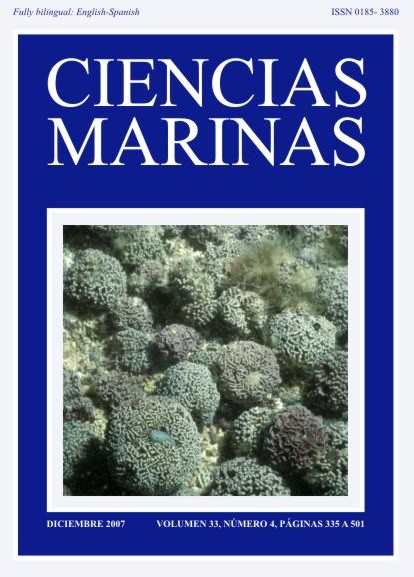Experimental evaluation of rhodoliths as living substrata for infauna at the Abrolhos Bank, Brazil
Main Article Content
Abstract
Over large areas of the Brazilian continental shelf, coralline algal rhodoliths provide habitats with high community diversity. In order to understand the role of rhodoliths in structuring the poorly studied infauna of these habitats, we determined seasonal patterns of their size and shape related to the associated biota, and experimentally tested the influence of living substrata in the Abrolhos Archipelago marine protected area. Samples (n = 20) were randomly collected from a rhodolith bed using cores (~1.7 L) during three seasons of the year. Subsamples were sorted by grain size, dry weight, degree of thallus branching, and associated invertebrate taxa. Live and dead rhodoliths with invertebrates removed and control samples with invertebrates present (n = 6) were transplanted inside baskets into the bed to test substrate associations. Transplanted samples were compared with natural ones directly collected from the rhodolith bed after nearly three months. The most common rhodolith-forming species was Mesophyllum erubescens. Polychaetes were usually the dominant taxon, making up 63% of the total infauna. The most common infaunal species was the polychaete Exogone dispar. There was a general seasonal trend of a reduction in invertebrate abundance from autumn/winter to spring. Amphipods were dominant in autumn (70% of sample) but half as abundant in winter and spring when their population density was similar to that of polychaetes (49%). Ophiuroids and molluscs were less abundant (up to 1% and 5% of the total sample). Polychaete abundance was significantly lower in live than in dead transplanted rhodoliths, whereas amphipods showed no difference. Variation in infaunal abundances was related to variability in habitat heterogeneity due to changes in rhodolith size and shape resulting from changes in water turbulence. The calcareous thalli of rhodoliths not only build complex calcareous gravels but also affect community diversity providing a refuge for infaunal groups.
Downloads
Article Details
This is an open access article distributed under a Creative Commons Attribution 4.0 License, which allows you to share and adapt the work, as long as you give appropriate credit to the original author(s) and the source, provide a link to the Creative Commons license, and indicate if changes were made. Figures, tables and other elements in the article are included in the article’s CC BY 4.0 license, unless otherwise indicated. The journal title is protected by copyrights and not subject to this license. Full license deed can be viewed here.

